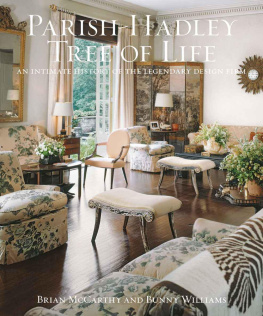
IMAGES
of America
LAFOURCHE PARISH

Lafourche Parish is located in southeast Louisiana and is bordered by the Gulf of Mexico to its south, Terrebonne Parish to its west, Assumption Parish to its northwest, St. John and St. James Parishes to its north, and St. Charles and Jefferson Parishes to its east. (Courtesy of Lafourche Parish Tourist Commission.)
ON THE COVER: Members of the congregation of St. Charles Borromeo Catholic Church cross a rope-pulled ferry to attend services around 1914. The location of the church on the east bank of Bayou Lafourche required members from the west bank to cross by ferry. The ferry served the parishioners until it was replaced by a pontoon bridge in 1932 and, later, by a one-lane metal bridge in 1949. The ferryman was Philip Babin, who lived in the small house. (Courtesy of Phyllis Toups Robichaux.)
IMAGES
of America
LAFOURCHE PARISH
Clifton P. Theriot

Copyright 2014 by Clifton P. Theriot
ISBN 978-1-4671-1307-6
Ebook ISBN 9781439648667
Published by Arcadia Publishing
Charleston, South Carolina
Library of Congress Control Number: 2014940825
For all general information, please contact Arcadia Publishing:
Telephone 843-853-2070
Fax 843-853-0044
E-mail
For customer service and orders:
Toll-Free 1-888-313-2665
Visit us on the Internet at www.arcadiapublishing.com

This book is dedicated to my beloved grandmother Lorena Plaisance Dufrene (19211997), pictured at left, who inspired my love and interest in history, and to my dear friend Doris Mae Ledet (19292012), pictured at right, a fellow historian and genealogist whose encouragement and assistance in preserving local history was greatly appreciated.
CONTENTS
ACKNOWLEDGMENTS
Several people have helped to make this book become a reality. A sincere thanks and a debt of gratitude go to Sarah Simms, whose advice, encouragement, and assistance were invaluable. Thanks go to Hayley Johnson and Goldie Legendre for their assistance with editing the text for the book. William Charron was instrumental with technical advice and assistance. Thanks go to Emilie Pitre for helping with the daily operations of the archives, freeing up time for me to work on this publication.
Unless otherwise credited, all images in the book are courtesy of the Archives and Special Collections Department at Nicholls State University. Several collections housed in the archives were invaluable in compiling this pictorial history, including the Doris Mae Ledet Collection, the Meyer Family Collection, the Lafourche Heritage 76 Collection, the Historic Thibodaux Collection, the Historic Lafourche Parish Collection, and the William Littlejohn Martin Collection. Other collections utilized were the Coignet Family Collection, the St. Johns Episcopal Church Collection, the J. Paul Leslie Photograph Collection, the Wilson A. Petit Collection, the Robert Ruffin Barrow Collection, the James A. Legendre Collection, the Lafourche Heritage Society Collection, the St. Joseph Hospital Collection, the Maude Billiu Collection, the Lee Martin Collection, the J. Wilson Lepine Papers, the Wayne P. Oncale Collection, and the J.L. Basset Collection.
This book was also made possible by several individuals who loaned their treasured photographs and/or assisted with finding historical facts. Those individuals include Kevin Allemand of the Archives for the Catholic Diocese of Houma-Thibodaux, Paul Chiquet of the South Lafourche Public Library, Martin L. Cortez, Brad France, Dee Dee Gaubert and the Bayou Lafourche Folklife and Heritage Museum, Evert Halbach, J. Paul Leslie, Wayland Marcombe, Billy Pitre, Louella Picciola Pitre, Patrick Pitre, Robert M. Pugh, Anke Tonn, Philip J. Toups, and Phyllis Toups Robichaux.
A special thanks goes to my mother, Sylvia D. Theriot, and my family for their continued encouragement. Also, thanks are extended to Dr. Christopher E. Cenac Sr., a friend and fellow historian, for his support.
INTRODUCTION
Life in Lafourche Parish has been centered along Bayou Lafourche for over two centuries. Because it branches off of the Mississippi River forming a fork at Donaldsonville, the bayou was named Lafourche, which is French for the fork. Bayou Lafourche, which has served as a lifeline for the parish since its inception, is linked to settlement patterns, community self-sufficiency, transportation, economy, and growth.
The area that today comprises Lafourche Parish was traversed by white men during the period of early European exploration and colonization and encompassed the entire region along the bayou from the Mississippi River to the Gulf of Mexico, including the present-day parishes of Ascension, Assumption, Lafourche, and Terrebonne. The European explorers named the region Lafourche des Chetimachas after the Native American tribe they found living in the area. The parish was originally inhabited by Native Americans from the Chitimacha, Washa (Ouacha), and Chawasha (Chaouacha) tribes. During colonization, French, Spanish, Acadian, Canary Islanders (Isleos), German, and Canadian pioneers who had initially settled in New Orleans or along the Mississippi River migrated to the region. The predominant culture and language during the parishs early years was French, still evident today within the parishs Acadian/Cajun population.
The effect of the Roman Catholicism brought to Louisiana by the early settlers during the colonial period can be seen in the governmental divisions, or districts, which were based on Roman Catholic ecclesiastical parishes. After the Louisiana Purchase in 1803, the Territory of Orleans, the present state of Louisiana, was divided into counties, including the County of Lafourche. This county included present-day Assumption Parish, with Napoleonville briefly serving as the county seat. In 1807, Lafourche Interior Parish, encompassing present-day Lafourche and Terrebonne Parishes, became one of 19 civil parishes created by the territorial legislature. Thibodaux was chosen as the seat of government for the new parish. Terrebonne Parish was established in 1822 from the southern portion of the old Lafourche Interior Parish.
Life along the bayou was both rewarding and difficult. When the Louisiana delta formed, high ground or ridges resulted along the waterways from yearly floods. These ridges gently sloped away from the bayous and rivers toward the swamps. Thus, when colonization began, settlers established their farms and constructed their homes along the fertile ridges. Since the bayou and waterways were the main source of transportation, all property fronted the bayou. The French arpent, which is 192 feet, or five-sixths of an acre, was the common form of measurement. Most properties measured only a few arpents wide, so that every home would have access to the bayou and could easily maintain its own levee. Later, roadways were erected along the bayous. This linear pattern of settlement along the approximately 100 miles of Bayou Lafourche formed what many refer to as the Longest Street in the World. After 1803, these small farms were joined to form large sugar-producing plantations. These plantations required a substantial labor force, which introduced slavery to the region.
The communities of Lafourche are centered along the parishs bayou and numerous other waterways due to the central role these waterways played in transportation around the area. There are three incorporated municipalities in Lafourche parishThibodaux (1830), Lockport (1899), and Golden Meadow (1950). The parish seat of Thibodaux was named for Henry Schuyler Thibodaux, whose property was divided to form town lots. The town, established at the historic juncture of Bayou Lafourche and Bayou Terrebonne, was incorporated as Thibodauxville in 1830 and changed to Thibodeaux eight years later. The name was changed to the present spelling in 1918. The town of Lockport, originally known as Longueville, was established in 1835 in the central portion of the parish. Lockport was named after locks that were built at the juncture of Bayou Lafourche and the Barataria and Lafourche Canal in 1850. Golden Meadow was established in southern Lafourche Parish in the 1830s and later became a place of refuge for settlers displaced from coastal settlements due to hurricanes.
Next page











